|
Books Should Be Free Loyal Books Free Public Domain Audiobooks & eBook Downloads |
|
|
Books Should Be Free Loyal Books Free Public Domain Audiobooks & eBook Downloads |
|
Fiction |
|---|
|
Book type:
Sort by:
View by:
|
By: James Oliver Curwood (1879-1927) | |
|---|---|
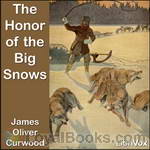 The Honor of the Big Snows
The Honor of the Big Snows
What unseen force may have brought young Jan Thoreau and his music from out of the barren lands into the remote camp of Lac Bain, forever changing the lives of those few who lived there? What brought him to the home of John and Melisse Cummins as the latter lay on her death bed? Moreover, what was the great sorrow and overpowering sadness which permeated the life of the young man in the months and years following his arrival, and by what means was he to struggle with The Honor of the Big Snows? | |
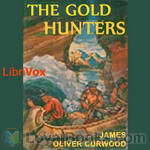 The Gold Hunters
The Gold Hunters
In The Gold Hunters we find 3 men in search of a treasure of gold hidden away in the upper reaches of the Canadian wilderness. One, a young white man, another his half breed friend, and the third the wise old Indian sage who communes with the wilderness as only his people have done through the generations. The 3 men know the gold is there, they had found the map which is leading them to it. Yet it seems that the map is leading them to places that don't exist, and each day finds a new adventure and new dangers which they must overcome if they are to achieve their reward. (Introduction by Roger Melin) | |
 The Golden Snare
The Golden Snare
With but two years of service in the RNMP Philip Raine finds himself somewhat unwillingly on the trail of Bram Johnson, wanted for murder and a wild, untamed and savage man who commands a pack of wolves as his brethren.But most peculiar of all is the snare which Bram had had in his posession and had somehow lost. It was a golden snare intricately woven out of the finest, most delicate flaxen hair of a woman. But what could possibly be the relationship between this half-human murderer and a woman... | |
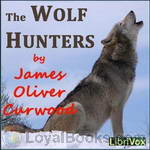 The Wolf Hunters
The Wolf Hunters
Follow Roderick and his friends Wabi and Mukoki on their adventures in the pristine North. They fight voracious wolves, hostile natives, and the vicious elements of nature, while on the hunt. Getting more than they bargained for, they discover a mysterious cabin, and stumble upon a secret that has lain hidden for half a century. Full of twists and turns, danger and suspense, The Wolf Hunters, the prequal to The Gold Hunters, is an excellent read. (Introduction by Brian Adey) | |
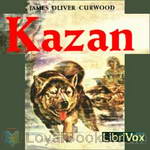 Kazan
Kazan
Kazan (sometimes published with the subtitle The Wolf Dog) is a once very popular novel by environmentalist and author James Oliver Curwood. After a trip to the Yukon area of Canada and Alaska, Curwood wrote a series of wilderness adventure novels that were best-sellers in the 1910’s and 1920’s and remained popular through mid century. Jack London had begun the vogue for northland dog stories with his Call of the Wild and White Fang, and there were many imitators, but none had a greater impact than Curwood... | |
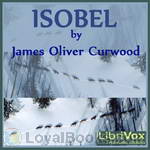 Isobel
Isobel
Action, intrigue, and a touch of romance in the farthest reaches of northern Canada. Sergeant Billy MacVeigh of the Canadian Northwest Mounted, with his only partner Pelliter are the only official representatives in the lonely and desolate reaches of Point Fullerton, hundreds of miles from the next nearest outpost, and from any civilization. Both are nearing the end of their service in those regions, and their main function has been to try to find the elusive murderer Scottie Deane, and if they happen upon anybody trading in Eskimo women to haul them in also... | |
 Courage of Marge O'Doone
Courage of Marge O'Doone
David Raine is travelling, trying to escape his own memories. On the train he meets Father Rolland, who invites him North, to a world of "mystery and savage glory", to help him find himself again. On the same train, he meets a mysterious woman searching for a man named Michael O'Doone. When she's gone, he finds a thin package on her seat. It contains the photograph of a girl and David makes it his aim to find her, while following Father Rolland into the mysterious North. | |
By: James Otis (1848-1912) | |
|---|---|
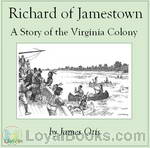 Richard of Jamestown: A Story of the Virginia Colony
Richard of Jamestown: A Story of the Virginia Colony
Richard of Jamestown by James Otis was written for children with the purpose to show them the daily home life of the Virginia colonists. It is written from the viewpoint of a young boy named Richard Mutton. | |
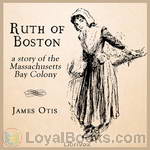 Ruth of Boston: A Story of the Massachusetts Bay Colony
Ruth of Boston: A Story of the Massachusetts Bay Colony
James Otis wrote a series of books depicting life in the new colonies, written from a child’s point of view. Ruth of Boston is the story of 12 year old Ruth, coming from London to live in the Massachusetts Bay Colony. It gives accounts of what a girl’s daily life might have been like during the beginnings of this colony. | |
 Toby Tyler or Ten Weeks with a Circus
Toby Tyler or Ten Weeks with a Circus
Toby Tyler tells the story of a ten year-old orphan who runs away from a foster home to join the traveling circus only to discover his new employer is a cruel taskmaster. The difference between the romance of the circus from the outside and the reality as seen from the inside is graphically depicted. Toby's friend, Mr. Stubbs the chimpanzee, reinforces the consequences of what happens when one follows one's natural instincts rather than one's intellect and conscience, a central theme of the novel. | |
By: James Schmitz (1911-1981) | |
|---|---|
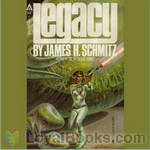 Legacy
Legacy
Ancient living machines that after millennia of stillness suddenly begin to move under their own power, for reasons that remain a mystery to men. Holati Tate discovered them—then disappeared. Trigger Argee was his closest associate—she means to find him. She's brilliant, beautiful, and skilled in every known martial art. She's worth plenty—dead or alive—to more than one faction in this obscure battle. And she's beginning to have a chilling notion that the long-vanished Masters of the Old Galaxy were wise when they exiled the plasmoids to the most distant and isolated world they knew.... | |
By: James Stephens | |
|---|---|
 There is a Tavern in the Town
There is a Tavern in the Town
The soul of Irish wit is captured in this unique tale of a barstool philosopher, the concluding story from 'Here Are Ladies' by James Stephens. (Introduction by iremonger) | |
By: James Thomson (1834-1882) | |
|---|---|
 Satires and Profanities
Satires and Profanities
"Believing as I do that James Thomson is, since Shelley, the most brilliant genius who has wielded a pen in the service of Freethought, I take a natural pride and pleasure in rescuing the following articles from burial in the great mausoleum of the periodical press. There will doubtless be a diversity of opinion as to their value. One critic, for instance, has called “The Story of a Famous Old Jewish Firm” a witless squib; but, on the other hand, the late Professor Clifford considered it a piece of exquisite mordant satire worthy of Swift... | |
 City of Dreadful Night and Other Poems
City of Dreadful Night and Other Poems
While primarily known for being pessimistic, the poetry of James Thomson is also beautiful and psychologically complex. This 1903 edition, varying as it does in selection from the edition of the same name published during his lifetime, provides a representative look at what has come to be known as his best works. The title poem is a horror-laced journey through depths that are surface level supernatural and at their heart an exploration of depression and atheist existential crisis. Subsequent works turn personal struggles into pure art and praise poets that have gone before. - Summary by MoonLylith | |
By: James Weldon Johnson (1871-1938) | |
|---|---|
 Autobiography of an Ex-Colored Man
Autobiography of an Ex-Colored Man
Johnson's only novel, The Autobiography of an Ex-Colored Man, was originally published anonymously in 1912. It is a fictional novel written as a memoir of an unnamed biracial narrator who grew up in the South during the Reconstruction and post-Reconstruction eras. It is a story in which the narrator relates how as a young boy he initially assumed that he was white, and how his notions of racial identity were suddenly turned upside down one day—how from that moment on he was inclined to view himself and the world about him from the perspective of blackness. The novel received very little notoriety until Johnson republished it in 1927, this time taking full credit as its author. | |
By: James Whitcomb Riley (1849-1916) | |
|---|---|
 Selected Riley Child-Rhymes
Selected Riley Child-Rhymes
Riley was an American writer known as the “Hoosier poet”, and made a start writing newspaper verse in Hoosier dialect for the Indianapolis Journal in 1875. His favorite authors were Burns and Dickens. This collection of poems is a romanticized and mostly boy-centered paean to a 19th century rural American owning-class childhood. I’ve included the pieces I did because they’re the ones I most enjoyed when I read a copy of the collection handed down from my great-grandfather. | |
By: Jane Austen (1775-1817) | |
|---|---|
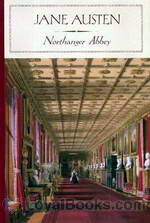 Northanger Abbey
Northanger Abbey
Jane Austen’s Northanger Abbey is a book about the life of Catherine Morland and her romantic relationships. The novel is divided into two parts; the first part begins with Catherine’s visit to Bath and her relationship with Henry Tilney and the other people she met there, and the second part starts with the arrival of Frederick Tilney and her visit to Northanger Abbey. This book alongside Pride and Prejudice and Sense and Sensibility is considered one of the major works of Jane Austen. The novel had undergone many revisions before its publication and it was even originally titled “Catherine... | |
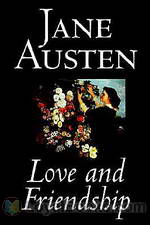 Love and Friendship
Love and Friendship
Begun when she was just eleven years old, Love and Friendship is one of Jane Austen's stories that very few readers may have encountered before. Austen experts feel that this story was written, like many others, only for the pleasure of her family and friends. It is scribbled across three notebooks, in childish handwriting, and the complete work is thought to have been written over a period of six or seven years. It is dedicated to one of her cousins, whom she was very close to, Eliza de Feuillide... | |
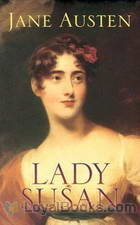 Lady Susan
Lady Susan
An epistolary novel, Lady Susan is an early work by Austen that was posthumously published in 1871. The short novel focuses on the self-serving eponymous anti-heroine, as she cunningly maneuvers her way through society in search of a wealthy husband for both her daughter and herself. Disregarding anything but her own selfish goals, Susan employs her charms to lure men and draw them into her web of deceit, no matter their age or status. Exploring issues including morals, manners, self-indulgence, malevolence, and social machinations, the relatively short novel is sure to fascinate with its atypical form... | |
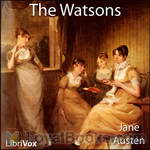 The Watsons
The Watsons
This fragment of a novel was written by Jane Austen in 1804 and remained untitled and unpublished until her nephew James Edward Austen-Leigh printed it in his A Memoir of Jane Austen in 1871. The title is from him. Mr Watson is a widowed clergyman with two sons and four daughters. The youngest daughter, Emma, has been brought up by a wealthy aunt and is consequently better educated and more refined than her sisters. But when her aunt contracts a foolish second marriage, Emma is obliged to return to her father’s house. There she is chagrined by the crude and reckless husband-hunting of two of her twenty-something sisters. | |
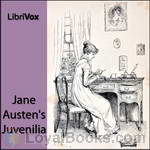 Jane Austen's Juvenilia
Jane Austen's Juvenilia
Before becoming the author of such classics as Sense and Sensibility, Pride and Prejudice, and Emma, Jane Austen experimented with various writing styles as a teenager in the early 1790s. This is a collection of her juvenilia, including the epistolary novels Love and Freindship, Lesley Castle, and Lady Susan, as well as her comic History of England and some shorter pieces. (Summary by Elizabeth Klett) | |
 Love and Freindship, and Other Early Works
Love and Freindship, and Other Early Works
This book draws together some of Jane Austen's earliest literary efforts. It includes "Love & Freindship" and "Lesley Castle" both told through the medium of letters written by the characters. It also contains her wonderful "History of England" and a "Collection of Letters" and lastly a chapter containing "Scraps". In these offerings, we may see the beginnings of Miss Austen's literary style. We may also discern traces of characters that we encounter in her later works. G. K. Chesterton in his preface, for example, says of a passage in Love and Freindship; "... | |
By: Jane Barlow (1857-1917) | |
|---|---|
 Strangers at Lisconnel
Strangers at Lisconnel
Strangers at Lisconnel is a sequel to Jane Barlow’s Irish Idylls. The locations and most of the characters are common to both. There is great humor and concomitantly a certain melancholy in most of these stories of the most rural of rural places in Ireland. Although of a higher social class than her characters, Our Jane seems to have a touch of softness in her heart for their utter simplicity, abject poverty and naiveté. From the following brief example of dialogue, can be seen that Ms Barlow could only have come to write these words after having heard them countless times in person: Mrs... | |
 Irish Idylls
Irish Idylls
Irish Idylls is a collection of short stories about Irish peasantry during the 19th Century. Ms Jane Barlow, an Irish lass, having, unbelievably, an uncertain date of birth, has a turn of phrase that delights and simultaneously enmeshes the reader/listener with compassion for her tableau. She captures the tune and lilt of dialogue so delightfully. A tiny sample: "So, by hook or by crook, Lisconnel holds together from year to year, with no particular prospect of changes; though it would be safe enough to prophesy that should any occur, they will tend towards the falling in of derelict roofs, and the growth of weeds round deserted hearthstones and crumbling walls... | |
By: Jane C. Loudon (1807-1858) | |
|---|---|
 Mummy! A Tale of the Twenty-Second Century
Mummy! A Tale of the Twenty-Second Century
The Mummy!: Or a Tale of the Twenty-Second Century is about a wise Egyptian mummy who is reanimated far in the future. With a different take on what lies ahead for civilization inspired from the exciting developments of the era, it is a strange, entertaining story and an early science fiction work by a woman novelist. | |
By: Jane D. Abbott (1881-1968) | |
|---|---|
 Highacres (Dramatic Reading)
Highacres (Dramatic Reading)
The story of a young mountain girl and her first year of city living and going to a high school. She knows nothing of town life, but she had dreams and longs to learn more and discover what the world is like outside of her mountain home. Go with her to the Westley's home, where she finds everyone kind, except the Wesley's oldest daughter, Isobel, who is proud and snubs her. With determination, and courage she enjoys her first year, and longs to continue at Highacres. | |
By: Jane Porter (1776-1850) | |
|---|---|
 The Scottish Chiefs
The Scottish Chiefs
An adventure novel about William Wallace, one of the most popular books ever written by Jane Porter. The French version was even banned by Napoleon, and the book has remained very popular with Scottish children, but is equally enjoyable for adults. | |
By: Jaques Futrelle (1875-1912) | |
|---|---|
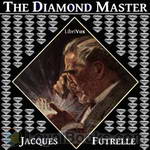 The Diamond Master
The Diamond Master
A perfect diamond worth millions is mailed, in a plain package, to a diamond dealer. Then he finds that identical diamonds were delivered to other diamond dealers. Where did the gems come from? Who sent them? And why? (Introduction by Dawn) | |
By: Jean de La Fontaine (1621-1695) | |
|---|---|
 Fables in Rhyme for Little Folks
Fables in Rhyme for Little Folks
Several of La Fontaine’s fables, translated into English by W. T. Larned. | |
By: Jean Ingelow (1820-1897) | |
|---|---|
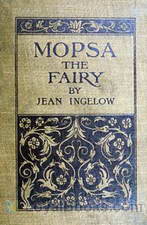 Mopsa the Fairy
Mopsa the Fairy
Jean Ingelow (1820 – 1897) was one of the more famous poets of the period, indeed many people suggested that she should succeed Alfred, Lord Tennyson as the first female Poet Laureate when he died in 1892. Mopsa the Fairy, written in 1869 is one of her more enduring stories. It is a delightful fantasy about a young boy who discovers a nest of young fairies and tells of their adventures together. | |
By: Jean M. Thompson (1865-?) | |
|---|---|
 Three Bears of Porcupine Ridge
Three Bears of Porcupine Ridge
Twenty-four delightful tales for children. Meet Timothy Mouse, Little Red Doe, Dame Woodchuck, King Moose and Unk-Wunk the Porcupine with their friends. Adventure and humor are skillfully wrapped around these lovable characters. | |
By: Jean Webster (1867-1916) | |
|---|---|
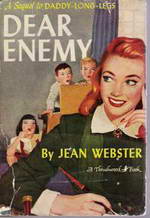 Dear Enemy
Dear Enemy
Dear Enemy is the sequel to Jean Webster’s novel Daddy-Long-Legs. The story as presented in a series of letters written by Sallie McBride, Judy Abbott’s college mate in Daddy-Long-Legs. Among the recipients of the letters are the president of the orphanage where Sallie is filling in until a new director can be installed, his wife (Judy Abbott of Daddy-Long-Legs), and the orphanage’s doctor (to whom Sallie addresses her letters: “Dear Enemy”). | |
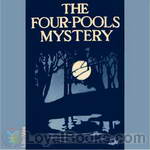 The Four-Pools Mystery
The Four-Pools Mystery
In The Four Pools Mystery the tyrannical plantation owner is deemed responsible for his own murder because of his mistreatment of the former slaves who continued in his employment after the war. Jean Webster (pseudonym for Alice Jane Chandler Webster) was born July 24, 1876 and died June 11, 1916. She was an American writer and author of many books including Daddy-Long-Legs and Dear Enemy. (Wiki) | |
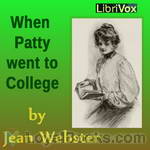 When Patty Went to College
When Patty Went to College
When Patty Went to College is Jean Webster's first novel, published in 1903. It is a humorous look at life in an all-girls college at the turn of the 20th century. Patty Wyatt, the protagonist of this story is a bright, fun loving, imperturbable girl who does not like to conform. The book describes her many escapades on campus during her senior year at college. Patty enjoys life on campus and uses her energies in playing pranks and for the entertainment of herself and her friends. An intelligent girl, she uses creative methods to study only as much as she feels necessary... | |
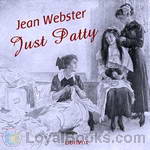 Just Patty
Just Patty
Patty, Conny, and Priscilla are the best of friends, and roommates at boarding school. While the teachers might say they are mischievous, even troublemakers, Patty and her friends act only in accordance with their convictions. From forming a labor union to furnishing a house for the neighbors, Patty's ideas are unconventional, yet loads of fun. Just Patty is the prequel to When Patty Went to College, the first novel by the author of Daddy-Long-Legs and Dear Enemy. | |
 Jerry
Jerry
Jerry is the humorous story of a young man's attempt to win his lady. Jerry is waiting for his friends at a hotel in Italy, and is bored and lonely. When he hears that a beautiful American lady, Constance Wilder, is staying nearby, he tries to visit her. After an awkward first meeting, he tries to catch her attention by pretending to be a peasant tour guide. She recognizes him for what he is, but pretends not to, and a lively charade is carried on as they tease and fall in love. A clean, sweet, funny historical fiction/romance. | |
By: Jean-Jacques Rousseau (1712-1778) | |
|---|---|
 A Discourse Upon the Origin and the Foundation of the Inequality Among Mankind
A Discourse Upon the Origin and the Foundation of the Inequality Among Mankind
This work presents Rousseau’s belief in the profoundly transformational effects of the development of civilization on human nature, which Rousseau claims other political philosophers had failed to grasp. Specifically, before the onset of civilization, according to Rousseau, natural man lived a contented, solitary life, naturally good and happy. It is only with the onset of civilization, Rousseau claims, that humans become social beings, and, concomitant with their civilization, natural man becomes corrupted with the social vices of pride, vanity, greed and servility. | |
By: Jeff Sutton (1913-1979) | |
|---|---|
 First on the Moon
First on the Moon
The four men had been scrutinized, watched, investigated, and intensively trained for more than a year. They were the best men to be found for that first, all-important flight to the Moon--the pioneer manned rocket that would give either the East or the West control over the Earth.Yet when the race started, Adam Crag found that he had a saboteur among his crew ... a traitor! Such a man could give the Reds possession of Luna, and thereby dominate the world it circled.Any one of the other three could... | |
By: Jeffery Farnol (1878-1952) | |
|---|---|
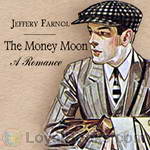 The Money Moon: A Romance
The Money Moon: A Romance
The Money Moon is a light-hearted romance. Jilted in love, our American millionaire hero, George Bellow, takes a walking tour of the Kent countryside to overcome the “Haunting Spectre of the Might Have Been”. Along the way he makes friends with a young boy out to discover a fortune to save his Aunt Anthea from having to sell the family estate and George discovers his ideal “Arcadia” and true love. | |
By: Jennette Lee (1860-1951) | |
|---|---|
 Green Jacket
Green Jacket
An early example of the female private detective, Jennette Lee’s Millicent Newberry made her first appearance in The Green Jacket in 1917 and was also featured in two later books, The Mysterious Office in 1922 and Dead Right in 1925. Miss Newberry brings her own unique perspective to her cases, only accepting those where she has a say in what happens to the guilty party. She is rarely without her knitting, using it as a technique to put clients and suspects alike at ease, while also knitting... | |
By: Jennie Hall (1875-1921) | |
|---|---|
 Viking Tales
Viking Tales
Viking tales are tales from Iceland, featuring the king Halfdan and his son Harald. | |
By: Jerome K. Jerome (1859-1927) | |
|---|---|
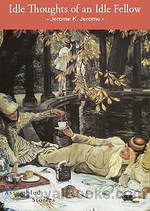 Idle Thoughts of an Idle Fellow
Idle Thoughts of an Idle Fellow
Idle Thoughts of an Idle Fellow, published in 1886, is a collection of humorous essays by Jerome K. Jerome. It was the author’s second published book and helped establish him as a leading English humorist. The book consists of 14 independent articles arranged by themes. | |
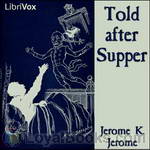 Told after Supper
Told after Supper
It is Christmas Eve, and the narrator, his uncle and sundry other local characters are sitting round the fire drinking copious quantities of whisky punch and telling ghost stories until bedtime, when… But no, I won’t spoil the fun. This is a little gem: Jerome at his tongue-in-cheek best. | |
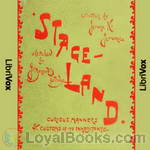 Stage Land
Stage Land
A comic look at the curious habits and customs of the inhabitants of ‘Stage Land’. Dedicated to ‘that highly respectable but unnecessarily retiring individual, of whom we hear so much but see so little, “the earnest student of drama” | |
 They and I
They and I
A man and his three children leave the “Little Mother” at home in the city and set up temporary housekeeping in a country cottage to supervise the remodeling of the house he has just purchased there. The story is narrated by the father. His interactions with his children, interspersed with his own recollections of past events, make for hilarious reading. This is Jerome at his best, IMHO, although this is apparently one of this lesser known novels. | |
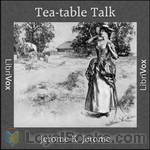 Tea-table Talk
Tea-table Talk
As the New York Times said in 1903, this lesser-known work by Jerome K. Jerome does not display “the wit of Congreve or even the glittering sort Mr. Jerome employs in some of his other books.”It takes the form of imaginary conversations between the writer and a number of un-named characters at the afternoon tea table. The Woman of the World, the Old Maid, the Girton Girl, the Philosopher and the Minor Poet wax lyrical on subjects like marriage, art, society and politics. Frequently they appear to prefer the sound of their own voice to that of others... | |
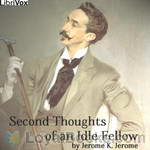 Second Thoughts Of An Idle Fellow
Second Thoughts Of An Idle Fellow
A second volume of humorous essays on various subjects, following the success of Idle thoughts Of An Idle Fellow. | |
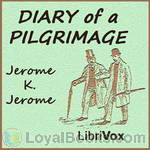 Diary of a Pilgrimage
Diary of a Pilgrimage
A possibly fictionalised account by the comic novelist Jerome K. Jerome of a trip to Germany that he undertook with a friend in order to see the famous Passion Play at Oberammergau. The journey takes in London, Dover, Ostend, Cologne, Munich, Oberau, Oberammergau and then back to London via Heidelberg. As one might expect from the author of 'Three Men in a Boat', much goes wrong along the way, including seasickness, strange food, stranger beds, misleading guidebooks, bewildering train timetables, and numerous cultural and linguistic misunderstandings. | |
By: Jesse Lynch Williams (1871-1929) | |
|---|---|
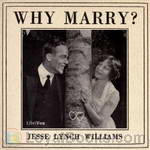 Why Marry?
Why Marry?
Why Marry? is a comedy, which "tells the truth about marriage". We find a family in the throes of proving the morality of marriage to a New Age Woman. Can the family defend marriage to this self-supporting girl? Will she be convinced that marriage is the ultimate sacredness of a relationship or will she hold to her perception that marriage is the basis of separating two lovers."Why Marry?" won the first Pulitzer Prize for Drama. | |
By: Jessie Benton Frémont | |
|---|---|
 The Will and the Way Stories
The Will and the Way Stories
Simply put, this is a book of 9 short vignettes each of which describes a different scenario which demonstrates the age old adage: 'where there's a will, there's a way'. | |
By: Jessie Fothergill (1851-1891) | |
|---|---|
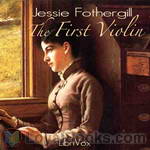 The First Violin
The First Violin
May Wedderburn is a quiet provincial girl, living in small and seemingly boring Skernford. Underneath the dull exterior, there is mystery, suspicion and fear in this little town, surrounding the austere local wealthy landowner who is very interested in marrying poor May. It looks as though she will have to marry him whether she likes it or not until an unsuspected alliance is formed between her and a respected old lady. They both escape to Germany where music and excitement await them. | |
By: Jessie Graham Flower (-1931) | |
|---|---|
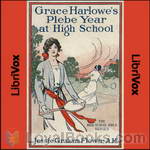 Grace Harlowe's Plebe Year at High School
Grace Harlowe's Plebe Year at High School
This delightful book tells about a group of smart youths who get up to some wonderful adventures together – and save one another from troubles. The unofficial leader of the group is Grace Harlowe, the title character. When Anne Pierson comes to the class at the beginning of the year, they decide to take her under their wing. Anne has a lot of troubles at home, but will true friends make her happy? | |
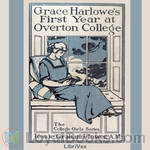 Grace Harlowe's First Year at Overton College
Grace Harlowe's First Year at Overton College
Set after the Grace Harlowe High School series, Grace and her friends Miriam and Anne start a new chapter of their lives as Freshmen at Overton College. After various trials and tribulations they earn the respect of the elder classes and become valued members of the school. (Introduction by BumbleVee) | |
 Grace Harlowe's Sophomore Year at High School
Grace Harlowe's Sophomore Year at High School
Being a good and loyal friend is not easy, and Grace learns it the hard way. But, as in all children's books, good triumphs over evil. | |
 Grace Harlowe's Senior Year at High School; or, The Parting of the Ways
Grace Harlowe's Senior Year at High School; or, The Parting of the Ways
The four series follow Grace Harlowe and her friends through high school, college, abroad during World War I, and on adventures around America. In The High School Girls Series, Grace attends Oakdale High School with friends Anne Pierson, Nora O'Malley, and Jessica Bright. The four promote fair play and virtue while winning over troubled girls like Miriam Nesbit and Eleanor Savell, playing basketball, and founding sorority Phi Sigma Tau. The group becomes friends with boys in their acquaintance: David Nesbit, Tom Gray, Hippy Wingate, and Reddy Brooks, forming "The Eight Originals." | |
 Grace Harlowe's Second Year at Overton College
Grace Harlowe's Second Year at Overton College
The four series follow Grace Harlowe and her friends through high school, college, abroad during World War I, and on adventures around America. In The High School Girls Series, Grace attends Oakdale High School with friends Anne Pierson, Nora O'Malley, and Jessica Bright. The four promote fair play and virtue while winning over troubled girls like Miriam Nesbit and Eleanor Savell, playing basketball, and founding sorority Phi Sigma Tau. The group becomes friends with boys in their acquaintance: David Nesbit, Tom Gray, Hippy Wingate, and Reddy Brooks, forming "The Eight Originals." | |
 Grace Harlowe's Third Year at Overton College
Grace Harlowe's Third Year at Overton College
The four series follow Grace Harlowe and her friends through high school, college, abroad during World War I, and on adventures around America. In The High School Girls Series, Grace attends Oakdale High School with friends Anne Pierson, Nora O'Malley, and Jessica Bright. The four promote fair play and virtue while winning over troubled girls like Miriam Nesbit and Eleanor Savell, playing basketball, and founding sorority Phi Sigma Tau. The group becomes friends with boys in their acquaintance: David Nesbit, Tom Gray, Hippy Wingate, and Reddy Brooks, forming "The Eight Originals." | |
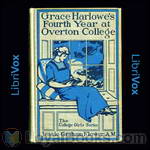 Grace Harlowe's Fourth Year at Overton College
Grace Harlowe's Fourth Year at Overton College
The four series follow Grace Harlowe and her friends through high school, college, abroad during World War I, and on adventures around America. In The High School Girls Series, Grace attends Oakdale High School with friends Anne Pierson, Nora O'Malley, and Jessica Bright. The four promote fair play and virtue while winning over troubled girls like Miriam Nesbit and Eleanor Savell, playing basketball, and founding sorority Phi Sigma Tau. The group becomes friends with boys in their acquaintance: David Nesbit, Tom Gray, Hippy Wingate, and Reddy Brooks, forming "The Eight Originals." (Introduction by Wikipedia) | |
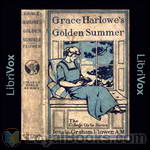 Grace Harlowe's Golden Summer
Grace Harlowe's Golden Summer
The College Girls Series sees the friends part ways: Grace, Anne, and Miriam depart for Overton College, while Jessica and Nora attend a conservatory. The Eight Originals gather on holidays, but the seven College books focus on the three at Overton, along with new friends like J. Elfreda Briggs. They form Semper Fidelis, a society devoted to aiding less fortunate students at Overton. Following graduation, Grace rebuffs offers of marriage for "what she had firmly believed to be her destined work," managing Harlowe House at Overton. | |
 Grace Harlowe's Return to Overton Campus
Grace Harlowe's Return to Overton Campus
The four series follow Grace Harlowe and her friends through high school, college, abroad during World War I, and on adventures around America. In The High School Girls Series, Grace attends Oakdale High School with friends Anne Pierson, Nora O'Malley, and Jessica Bright. The four promote fair play and virtue while winning over troubled girls like Miriam Nesbit and Eleanor Savell, playing basketball, and founding sorority Phi Sigma Tau. The group becomes friends with boys in their acquaintance: David Nesbit, Tom Gray, Hippy Wingate, and Reddy Brooks, forming "The Eight Originals... | |